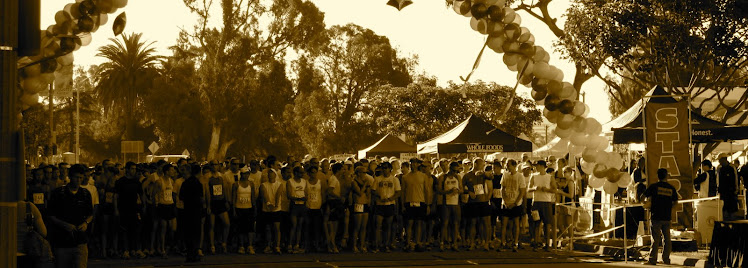
A few weekends ago, we went on our Mt. Whitney trip. We had been planning the trip for a while in our heads, and were very excited to summit the highest peak in the lower 48.
The hike started dark and early on the lower switchbacks of the Mt. Whitney trail. We all weighed our packs just for fun. They were filled with food, water, clothes, and of course our trusty (and never before used) ice axes and crampons. We were ready.
We started up at a brisk pace in anticipation of the tough and snowy trail conditions on the horizon. Before we knew it, we were trekking through the snow, with icicles hanging on the side of the trail. All the snow allowed us to choose our own path and cut off some of the switchbacks.
Soon enough we passed our first alpine lake, completely frozen over, and continued to ascend. It got harder and harder, as the air thinned out, and it became a process of one slow step at a time. The trick was to find a slow, sustainable pace that wouldn't leave you winded and gasping for air (kind of like running).
On the upper slopes, the ice axes were out, but mainly for balance. Everyone seemed to be feeling good, and we were making good time. Looming in the distance, we could see the 99 switchbacks, although with all the snow, it was just one steep hill. It didn't seem that far away, but it sure took a while to get to the base.

So, there we stood, eye to eye with the 99 switchbacks. The line of footprints went straight up, and led to Trail Crest. Ever so slowly, we worked our way up to the crest. One grueling step at a time until there were no more to be taken. We weren't at the summit, there are 2 more miles of trail to get there, but where we were was amazing!
We didn't end up making it to the summit on that day. And although, we really wanted to check Mt. Whitney off of our list, how could we be disappointed with what we had done that day? Speaking for myself, looking out from Trail Crest that day was probably the single most beautiful and awe-inspiring moment I have ever experienced. It was incredible to look back at where we came from. Seeing our footprints winding up the snow covered mountain was a great reminder of all the hard work and patience it took to get to that point, and that was something to be celebrated (which it later was... with beer and burgers).
Often times, we get too focused on reaching a particular destination, or big picture goal. Big picture goals are important, they keep us on track, they keep us focused, but if all you can think about is your ultimate goal, than you might be missing the point.
Too often when we're focusing on one foot in front of the next, and we don't realize how far we've come until we stop, reflect and look back.

We see progress and improvements everyday in all of you, and are excited every time a new barrier is broken. Whether that barrier be running your first marathon, running your first Papa loop, or making it to class 3 times a week instead of 2.
We feel so fortunate to have such a great and inspiring group of individuals in Rough-Fit, and get so pumped seeing all of your success, but it's YOU that should be excited!
So, take a moment and reflect. How far have you come? And where are you headed next?








